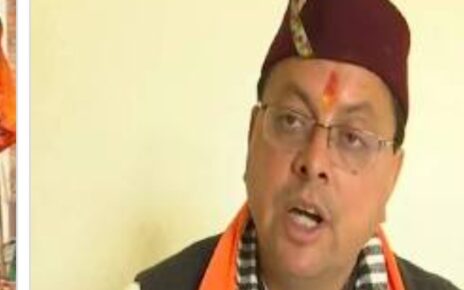New Delhi
Karnataka assembly elections is a high-stakes battle that could change the course of the state’s political history, and even rewrite the national political discourse. For BJP, winning an election in Karnataka will open the gateway to south India. For Congress, a decisive win in Karnataka will help it put a halt to BJP’s winning spree in the assembly election.
As voters in Karnataka exercise their franchise, we analyse various scenarios in the state.
Scenario 1: A BJP majority
BJP will be heavily banking on an adrenaline-charged election campaign spearheaded by Prime Minister Narendra Modi. Since May 1, the Prime Minister addressed a total of 21 rallies packed with enthusiastic supporters of the party.
Lingayat community, which constitutes the largest vote bank in the state (17-19% of the population), may prove to be a decisive factor in deciding the fate of the saffron party. The community has an influence on 100 of the 224 seats in the state. It is traditionally known for supporting BJP. However, Siddaramaiah’s promise to grant minority status to the Lingayats may woo them away from the Saffron party and BS Yeddyurappa, the Lingayat leader who has been in and out of the BJP since 2012.
BJP has been in power on Karnataka only once from 2008 to 2013. The state is considered a gateway to south India by the saffron party. Prime Minister’s popularity in the 18-25 age group may also help the party increase its vote share, especially in the urban areas. Out of the 4.96 crore voters, 15.42 lakh voters are in the age group of 18-19 years.
Bengaluru, which comprises 28 assembly segments, can help the saffron party inch closer to the majority mark. The urban middle-class is known for backing PM Modi’s pro-development pitch.
The region, an urban stronghold, has witnessed a massive rise in population since 2013. Its population has risen by 24% since 2013 and accounts for 18% of the total voter population. In the last ten years, the voter population has increased from 67.3 lakh (2008) to 87.9 lakh (2018).
Scenario 2: A Congress majority
Chief minister Siddaramaiah will be hoping to be the first chief minister of the state since Ramakrishna Hegde in 1985 to return to power.
The state is also known for voting differently in assembly elections and Lok Sabha elections. The parties in power in Karnataka and at the Centre have never been the same in the past 30 years.
While BJP used PM Modi who led an entourage of party leaders from across the country to campaign in the state, the Congress has firmly bestowed its faith in Siddaramaiah.
According to Times Now-VMR poll prediction last month, Siddaramaiah is the most popular for the post of CM with 46 per cent people surveyed voting in his favour. On the other hand, BJP’s Yeddyurappa enjoyed a 32 per cent support.
Knowing well that the Modi-Shah duo would inject a heavy dose of nationalism into the poll campaign, CM Siddaramaiah deftly chose to play up regional issues. Apart from working on caste and other regional factors, Siddaramaiah played on sub-nationalism by mooting the idea of a state flag, amplified the Kannada sentiment in administration and education, and also rebooted the Lingayat demand for a separate identity.
The saffron party’s corruption-free image also received a blow after it gave tickets to scam-tainted Reddy brothers to contest the election.
Muslims, with 12 per cent (70 lakh) of the state’s population, are one of the largest vote banks in the state. A high turnout by Muslim voters may prove to be a game changer for the Congress party. The community is wary of extending support to Janta Dal (secular), despite party president HD Kumaraswamy promising to make a Muslim the deputy chief minister if voted to power. The community fears that the party may join hands with BJP in case of a hung assembly.
Siddaramaiah and AICC president Rahul Gandhi maintain that Congress resurgence will start from Karnataka.
Case 3: Hung assembly
This time, the probability of a coalition arrangement seems to be high. According to Times Now-VMR poll, Congress is expected to win 91 seats, while BJP is expected to be a close second with 89 seats. A support from JD(S)+BSP alliance, which is expected to win 40 seats, will prove to be crucial for either of the two parties – the BJP or the Congress.
Various political pundits and pollsters have indicated that this year no party is expected of reaching the majority mark of 112 seats. In case of a fractured mandate, HD Kumaraswamy-led JD(S) will end up playing the role of a kingmaker.
The JD(S) had run a coalition government with the Congress from 2004 but dumped the party to join hands with the BJP in 2006 on a ‘20:20’ power-sharing agreement. The JD(S) ruled for 20 months, but when it came to the BJP’s turn to take the helm for the remaining 20 months, Kumaraswamy refused to cede authority. President’s rule was imposed until polls were held in May 2008.
Case 3: JD(S) extends support to BJP
Last month, Kumaraswamy had dropped hints that his party could join hands with the BJP to oust the ruling Congress. JD(S) has been particularly miffed with Congress president Rahul Gandhi’s repeated reference to JD(S) as the “B team” of BJP.
Chief minister Siddaramaiah had earlier ruffled JD(S) feathers by snubbing the party’s request to support the JD(S) candidate in the Rajya Sabha election.
Case 4: BJP extends support to JD(S)
In case, JD(S) manages to secure more than 50 seats, the state can see a JD(S)-led government with Kumaraswamy at its helm with the support of the saffron party. BJP will be more than willing to extend its support to JD(S) to move one-step closer to its objective of “Congress-Mukt Bharat”.
It is a do-or-die battle for JD(S) as it will be pushed to the brink of political extinction if it doesn’t make it. If JD(S) succeeds, Gowda would go all out to once again show that he has the mettle to be a major player in the national political arena.
JD(S) success will depend on the performance of a fourth player – Bahujan Samaj Party (BSP).
In the 2013 polls, JD(S) was runner-up in at least 14 seats with a margin of loss below 500 votes. Further, in 24 seats it fell short of victory by 5,000-10,000 votes. BSP amassed more than 14,000 votes in as many as 17 of these seats, cutting into the JD(S) votes.
Mayawati’s BSP has fielded 18 candidates in alliance with Deve Gowda’s party. Its poll roster of 11 Dalits, four Lingayats, and a Maratha, Kuruba (OBC) and Muslim candidate each will crack the poll arithmetic.
The scheduled castes (SC) and tribes (ST) in Karnataka together constitute 24% share in the state’s population, with Dalits being a majority. Of the Karnataka’s 224 assembly constituencies, 36 constituencies are reserved for Scheduled Castes and 15 for Scheduled Tribes.
A tie-up between BSP and JD(S) is expected to severely dent the Congress’s vote bank.




